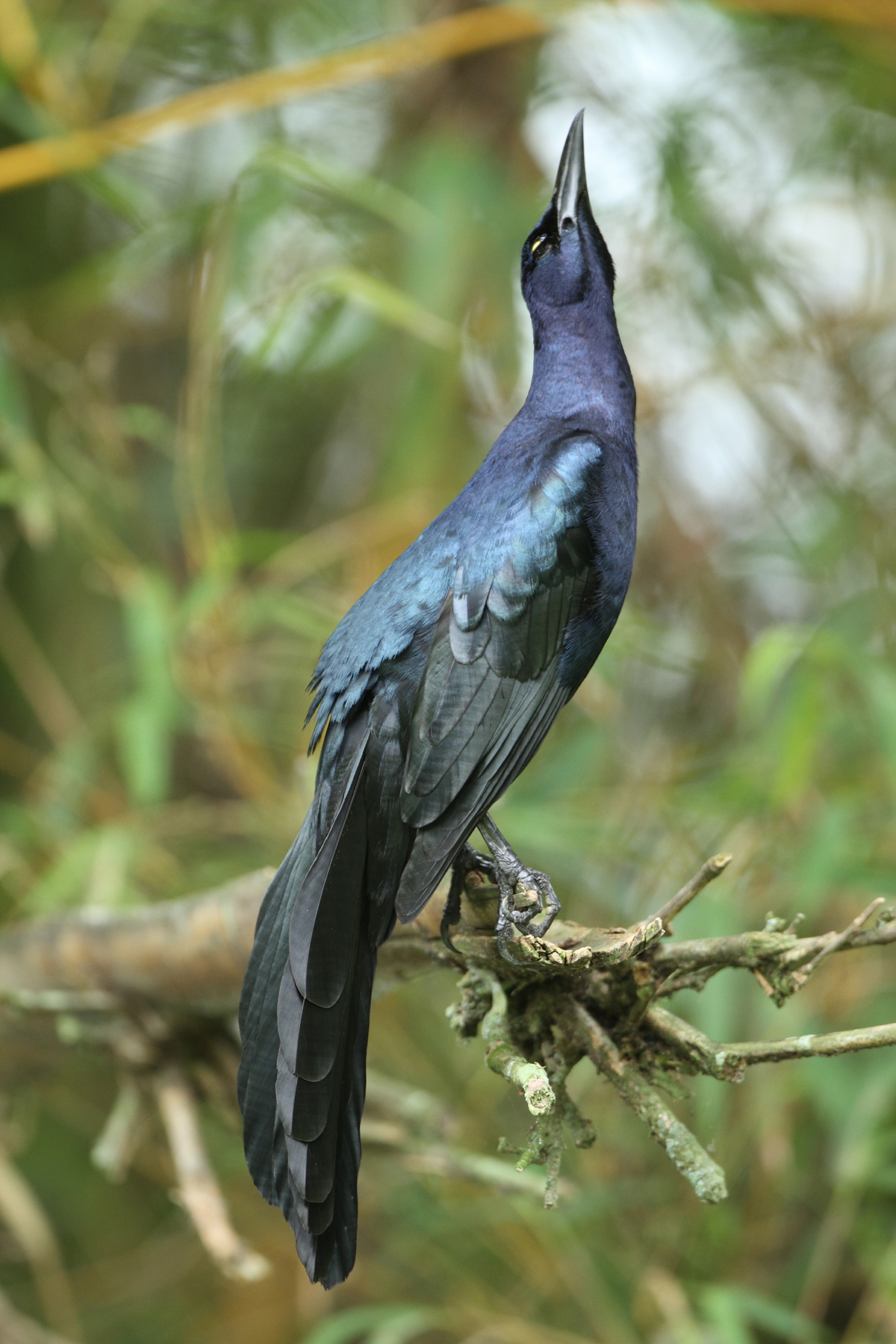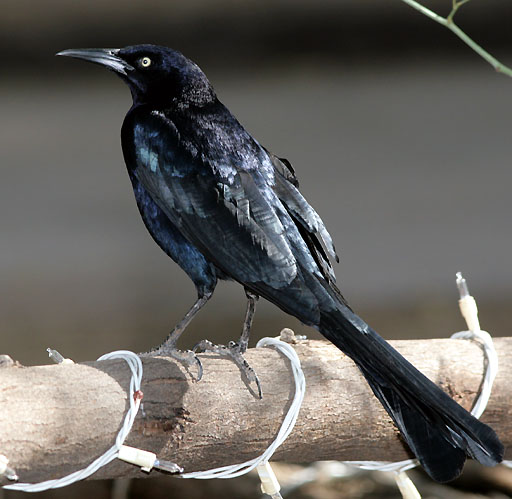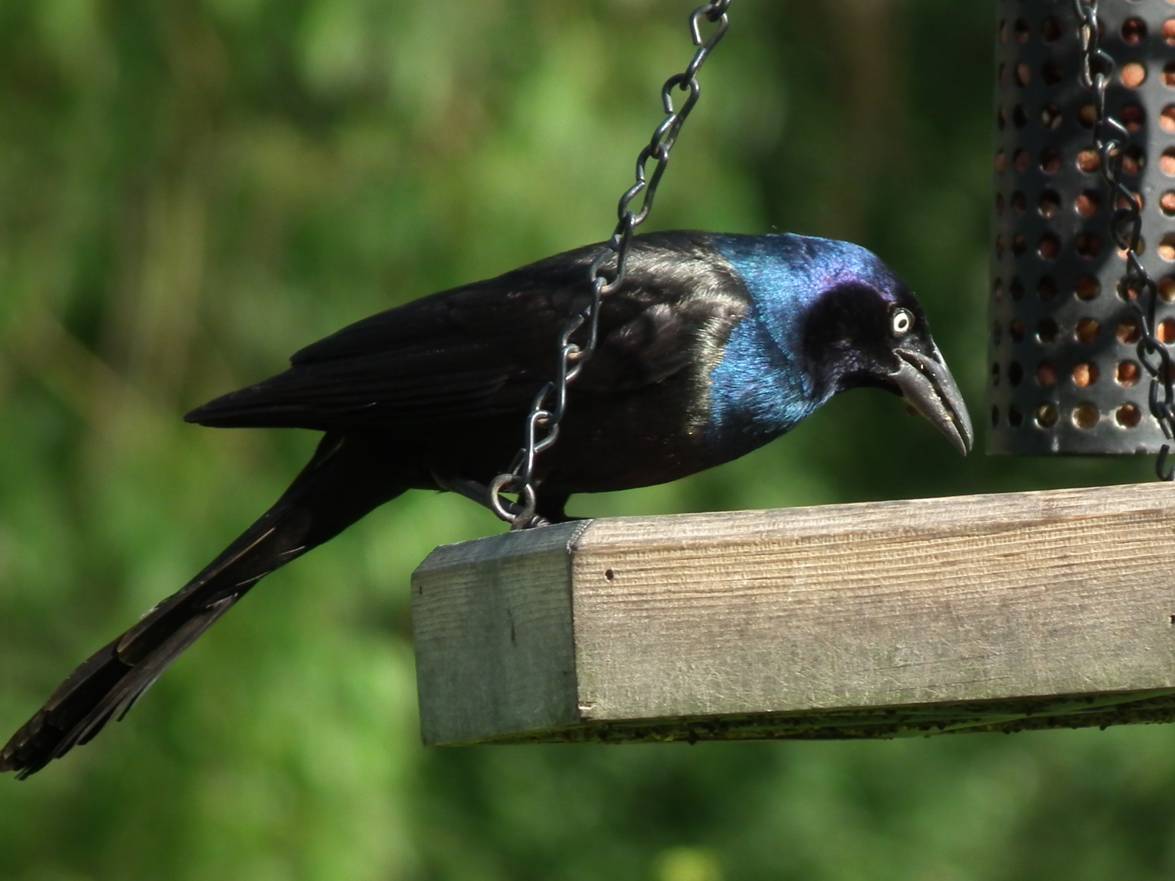|
Quiscalus
The Bird, avian genus ''Quiscalus'' contains seven of the 11 species of grackles, gregarious passerine birds in the icterid family. They are native to North America, North and South America. The genus was named and described by French ornithologist Louis Pierre Vieillot in 1816. The type species was subsequently designated as the common grackle (''Quiscalus quiscula'') by English zoologist George Robert Gray in 1840. The genus name comes from the specific name ''Gracula quiscula'' coined by Swedish naturalist Carl Linnaeus for the common grackle. From where Linnaeus obtained the word is uncertain, but it may come from the Taíno language, Taíno word ''quisqueya'', meaning "mother of all lands", for the island of Hispaniola. The genus contains six extant species and one extinct species: References External links Quiscalus videos, photos and sounds on the Internet Bird Collection Quiscalus, Bird genera Taxa named by Louis Pierre Vieillot {{Icteridae-stub ... [...More Info...] [...Related Items...] OR: [Wikipedia] [Google] [Baidu] |
Common Grackle
The common grackle (''Quiscalus quiscula'') is a species of large icterid bird found in large numbers through much of North America. First described in 1758 by Carl Linnaeus, the common grackle has three subspecies. Adult common grackles have a long and dark bill, pale yellow eyes, and a long tail. Adults often have a bluish iridescent appearance on their head, especially males. Common grackles can be found widely across North America east of the Rocky Mountains. Taxonomy The common grackle was first described in 1758 by Carl Linnaeus in the 10th edition of Systema Naturae, tenth edition of ''Systema Naturae'', as ''Gracula quiscula''. It was assigned to the genus ''Quiscalus'' by French people, French ornithologist Louis Pierre Vieillot in his 1816 ''Dictionnaire d'histoire naturelle''. Three subspecies are recognized: *the Florida grackle (''Q. q. quiscula'') (Linnaeus 1758), the nominate subspecies *the purple grackle (''Q. q. stonei'') (Chapman, 1935) *the bronzed grackle ... [...More Info...] [...Related Items...] OR: [Wikipedia] [Google] [Baidu] |
Great-tailed Grackle
The great-tailed grackle or Mexican grackle (''Quiscalus mexicanus'') is a medium-sized, Social animal, highly social passerine bird native to North America, North and South America. A member of the Family (biology), family Icteridae, it is one of 10 Extant taxon, extant species of grackle and is closely related to the boat-tailed grackle and the extinct slender-billed grackle. In the southern United States, southern and southwestern United States, the grackle is sometimes referred to simply as a "blackbird" or (erroneously) a "crow" due to its glossy black plumage; however, grackles form their own unique genus that is separate from other "blackbirds", such as the red-winged blackbird, red-winged and Brewer's blackbirds, despite being in the same Family (taxonomy), family (Icteridae). Superficially, Brewer's blackbird is one of the most visually similar species to grackles. In some parts of Mexico, the grackle is sometimes referred to in Spanish language, Spanish as ("raven"; "c ... [...More Info...] [...Related Items...] OR: [Wikipedia] [Google] [Baidu] |
Quiscalus Niger -Ciego De Avila Province, Cuba-8 (3)
The avian genus ''Quiscalus'' contains seven of the 11 species of grackles, gregarious passerine birds in the icterid family. They are native to North and South America. The genus was named and described by French ornithologist Louis Pierre Vieillot in 1816. The type species was subsequently designated as the common grackle (''Quiscalus quiscula'') by English zoologist George Robert Gray in 1840. The genus name comes from the specific name ''Gracula quiscula'' coined by Swedish naturalist Carl Linnaeus for the common grackle. From where Linnaeus obtained the word is uncertain, but it may come from the Taíno word ''quisqueya'', meaning "mother of all lands", for the island of Hispaniola Hispaniola (, also ) is an island between Geography of Cuba, Cuba and Geography of Puerto Rico, Puerto Rico in the Greater Antilles of the Caribbean. Hispaniola is the most populous island in the West Indies, and the second-largest by List of C .... The genus contains six extant species an ... [...More Info...] [...Related Items...] OR: [Wikipedia] [Google] [Baidu] |
Greater Antillean Grackle
The Greater Antillean grackle (''Quiscalus niger'') is a grackle found throughout the Greater Antilles, as well as smaller nearby islands. Like all ''Quiscalus'' grackles, it is a rather large, gregarious bird. It lives largely in heavily settled areas. Names It is known as the 'kling-kling' in Jamaica, 'chinchilín' in the Dominican Republic, as 'ching ching' in the Cayman Islands and as a 'chango' or 'machambo' in Puerto Rico. Most local names seem to derive from onomatopoeiac descriptions of the bird's calls. Taxonomy The Irish physician, naturalist and collector Hans Sloane stayed in Jamaica between 1687 and 1689. During his visit, he collected specimens and made notes on the plants and animals. Based on these notes, the ornithologist John Ray published a short description of the Greater Antillean grackle in 1713, using the Latin name ''Monedula tota nigra'' but it was not until 1725, more than 35 years after his visit, that Sloane himself published a description of the gra ... [...More Info...] [...Related Items...] OR: [Wikipedia] [Google] [Baidu] |
Boat-tailed Grackle
The boat-tailed grackle (''Quiscalus major'') is a passerine bird of the family Icteridae found as a permanent resident on the coasts of the Southeastern and Mid-Atlantic United States. Habitat The boat-tailed grackle is found in coastal saltwater marshes and, in Florida, also on inland waters. In salt marsh areas, least bitterns will often associate with and make mixed colonies with grackles. Boat-tailed grackles have established significant populations in several United States Gulf Coast cities and towns, where they can be found foraging in trash bins, dumpsters, and parking lots. Breeding The nest is a well-concealed cup in trees or shrubs near water; the average clutch size is just over three eggs. Description The male boat-tailed grackle is long and weighs . Adult males have entirely iridescent black plumage, a long dark bill, a pale yellowish or brown iris, and a long keel-shaped tail. The adult female is much smaller at long and a weight of . She is also distinguishe ... [...More Info...] [...Related Items...] OR: [Wikipedia] [Google] [Baidu] |
Icterid
Icterids () or New World blackbirds make up a family, the Icteridae (), of small to medium-sized, often colorful, New World passerine birds. The family contains 108 species and is divided into 30 genera. Most species have black as a predominant plumage color, often enlivened by yellow, orange, or red. The species in the family vary widely in size, shape, behavior, and coloration. Etymology The name, meaning "jaundiced ones" (from the prominent yellow feathers of many species) comes from the - ''íkteros'' via the . Relationship to other species This group includes the New World blackbirds, New World orioles, the bobolink, meadowlarks, grackles, cowbirds, oropendolas, and caciques. Despite the similar names, the first groups are only distantly related to the Old World common blackbird (a thrush) or to the Old World orioles. The Icteridae are not to be confused with the Icteriidae, a family created in 2017 and consisting of one species — the yellow-breasted chat ('' ... [...More Info...] [...Related Items...] OR: [Wikipedia] [Google] [Baidu] |
Grackle
Grackles is the common name of any of 11 species of passerine birds (10 extant and one extinct) native to North and South America. They belong to various genera in the icterid family. In all the species with this name, adult males have black or mostly black plumage. Baby birds use a screech-like call to indicate they wish to feed. * Genus '' Quiscalus'' ** Boat-tailed grackle, ''Quiscalus major'' ** Common grackle, ''Quiscalus quiscula'' ** Great-tailed grackle, ''Quiscalus mexicanus'' ** Nicaraguan grackle, ''Quiscalus nicaraguensis'' ** Greater Antillean grackle, ''Quiscalus niger'' ** Carib grackle, ''Quiscalus lugubris'' ** Slender-billed grackle, ''Quiscalus palustris'': extinct Extinction is the termination of an organism by the death of its Endling, last member. A taxon may become Functional extinction, functionally extinct before the death of its last member if it loses the capacity to Reproduction, reproduce and ... (1910) * Genus '' Hypopyrrhus'' ** R ... [...More Info...] [...Related Items...] OR: [Wikipedia] [Google] [Baidu] |
Nicaraguan Grackle
The Nicaraguan grackle (''Quiscalus nicaraguensis'') is a species of passerine bird belonging to the genus ''Quiscalus'', a genus of grackles in the New World blackbird family, Icteridae. It is found only in Nicaragua and northernmost Costa Rica. Description It is a medium-sized bird with a long, graduated tail and fairly long bill and legs. The bill and legs are black and the eye is pale yellow. The male is about 31 cm long while the female is 25 cm. The adult male's plumage is entirely black with an iridescent gloss. The gloss is violet on the belly and tail, violet-green on the head, back, and breast, and blue-green on most of the wings. The tail of the male is V-shaped, rising from the centre to the outer feathers. Immature males are duller and less glossy than the adults, with a brown belly and thighs. The female is brown above with a pale supercilium (the stripe over the eye), made more obvious by the dark lores and ear coverts. The thighs, flanks, and undertail ... [...More Info...] [...Related Items...] OR: [Wikipedia] [Google] [Baidu] |
Slender-billed Grackle
The slender-billed grackle (''Quiscalus palustris'') is an extinct species of grackle in the Icteridae (New World blackbirds) family of birds. The species was closely related to the western clade of the great-tailed grackle, from which it diverged quite recently, around 1.2 million years ago. It weighed 2.5 oz to 5 oz. The slender-billed grackle was endemic to central Mexico, especially in the Valley of Mexico and the Toluca Valley. Early observations recorded by Franciscan friar Bernardino de Sahagún in the 16th-century manuscript '' General History of the Things of New Spain'' indicate that the species was found in cultivated areas and towns. Later records indicated that it might be a marsh specialist. The species became extinct Extinction is the termination of an organism by the death of its Endling, last member. A taxon may become Functional extinction, functionally extinct before the death of its last member if it loses the capacity to Reproduction, reproduce and .. ... [...More Info...] [...Related Items...] OR: [Wikipedia] [Google] [Baidu] |






